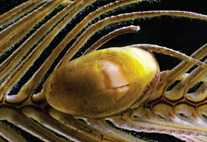Abstract
The Asian keelback snakes (genus Amphiesma) are a widely distributed group of Old World natricines, inhabiting a variety of niches and exhibiting significant morphological variation. Recent molecular phylogenies suggest that this genus is not monophyletic, and that additional cryptic diversity is also likely present. We conducted a phylogenetic analysis of the group based on 3162 bp of one mitochondrial gene (Cyt. b) and three nuclear genes (C-mos, Rag1, NT3), sampling 18 species in addition to those sequenced in previous works. All analyses consistently show that Amphiesma consists of three distinct, monophyletic lineages with strong support. We divide Amphiesma into three genera, Amphiesma, Hebius, and Herpetoreas. The genus Amphiesma is monotypic, Herpetoreas contains three species, and Hebius comprises the remaining 39 species. On the basis of a combination of molecular analyses and external morphological comparisons, we describe a new species in the Herpetoreas group from China as H. burbrinki sp. nov. Several other species are shown to be non-monophyletic or contain significant levels of intraspecific genetic diversity. Another Old World natricine genera, Xenochrophis is also found to be non-monophyletic. Our results indicate that further taxonomic revisions are needed in Natricinae, at multiple levels.

